Abstract
Exercise-induced asthma (EIA) was provoked by standardized treadmill running for 6 minutes in 15 asthmatic children. The tests were carried out after the administration of a placebo, salbutamol, sodium cromoglycate, choline theophyllinate, and atrophine methonitrate aerosol in randomized fashion on different days. The mean post-exercise percent fall in peak expiratory flow rate was 45-2, 4-1, 19-6, 18-3, and 24-9 respectively. The proportion of children having significant amelioration of their EIA compared with those taking the placebo was 100% for salbutamol, 80% for cromoglycate and theophyllinate, and 60% for atropine. Salbutamol, choline theophyllinate, and atropine were bronchodilators at rest whereas cromoglycate was not, and the ability to suppress EIA was unrelated to bronchodilator effect. Even after bronchodilatation at rest, further broncho-dilatation occurred during the exercise period.
Full text
PDF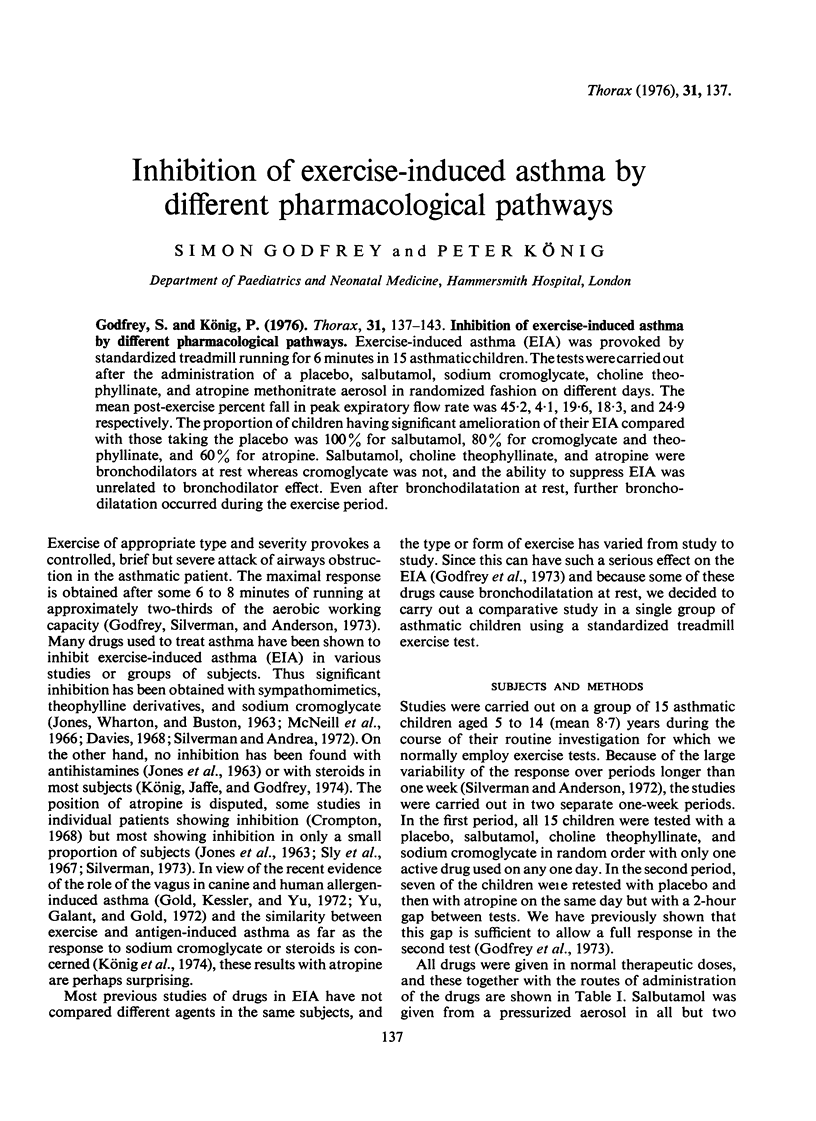
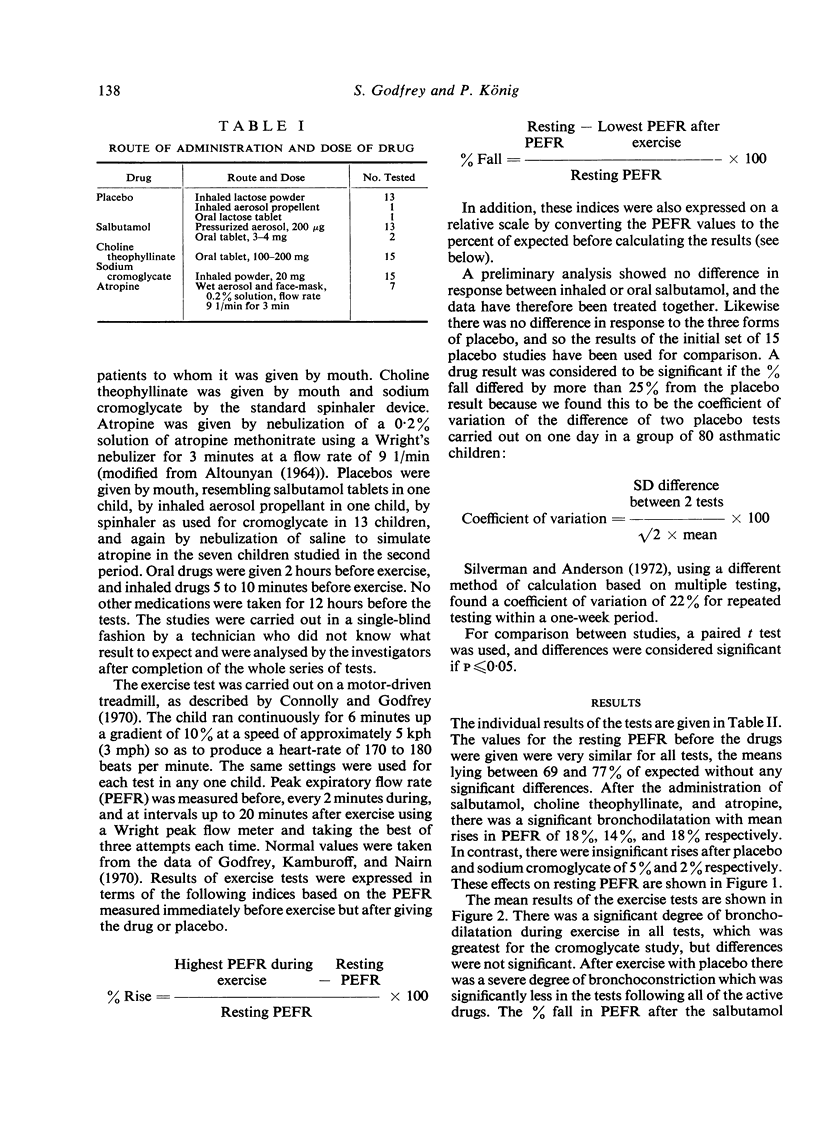
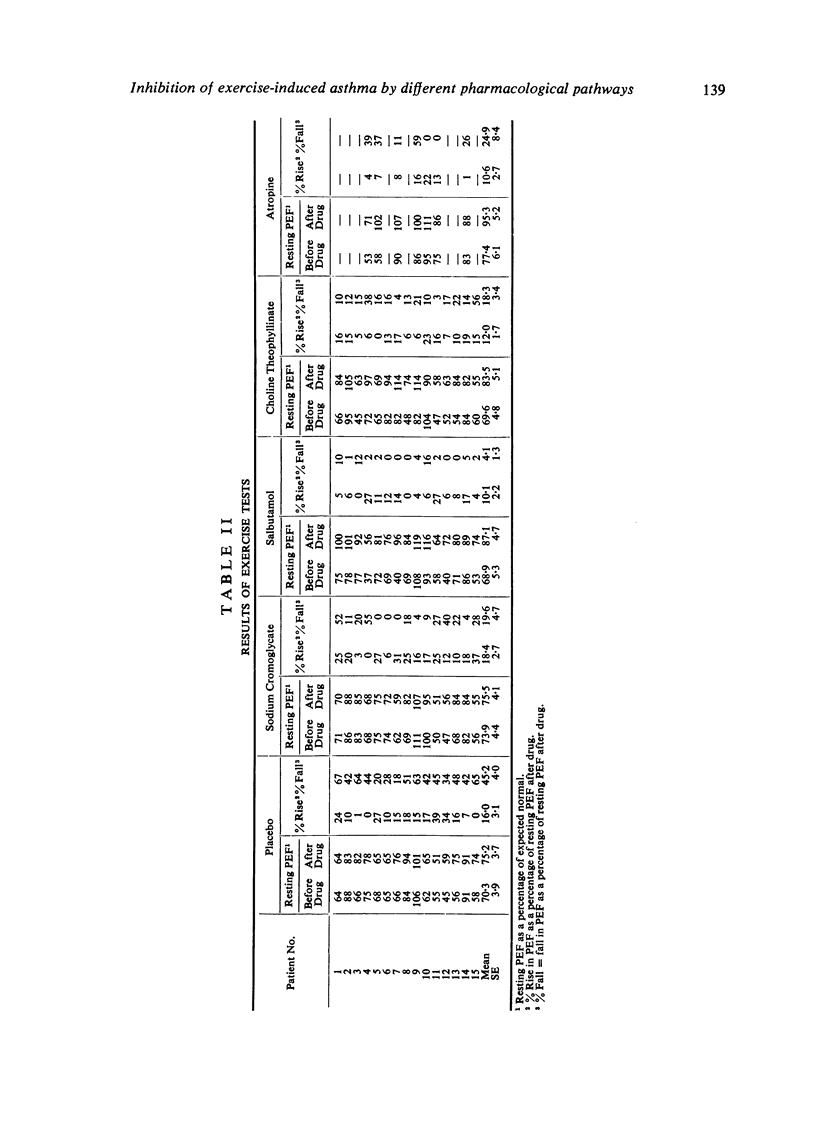
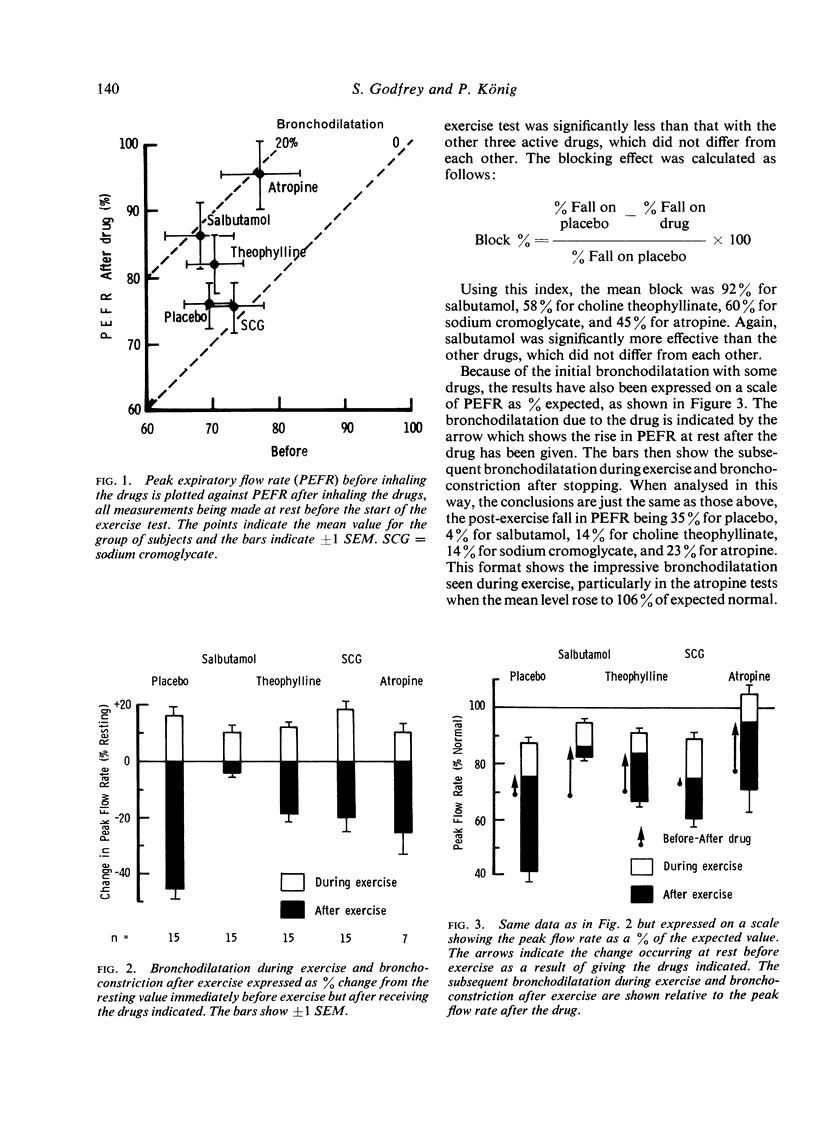
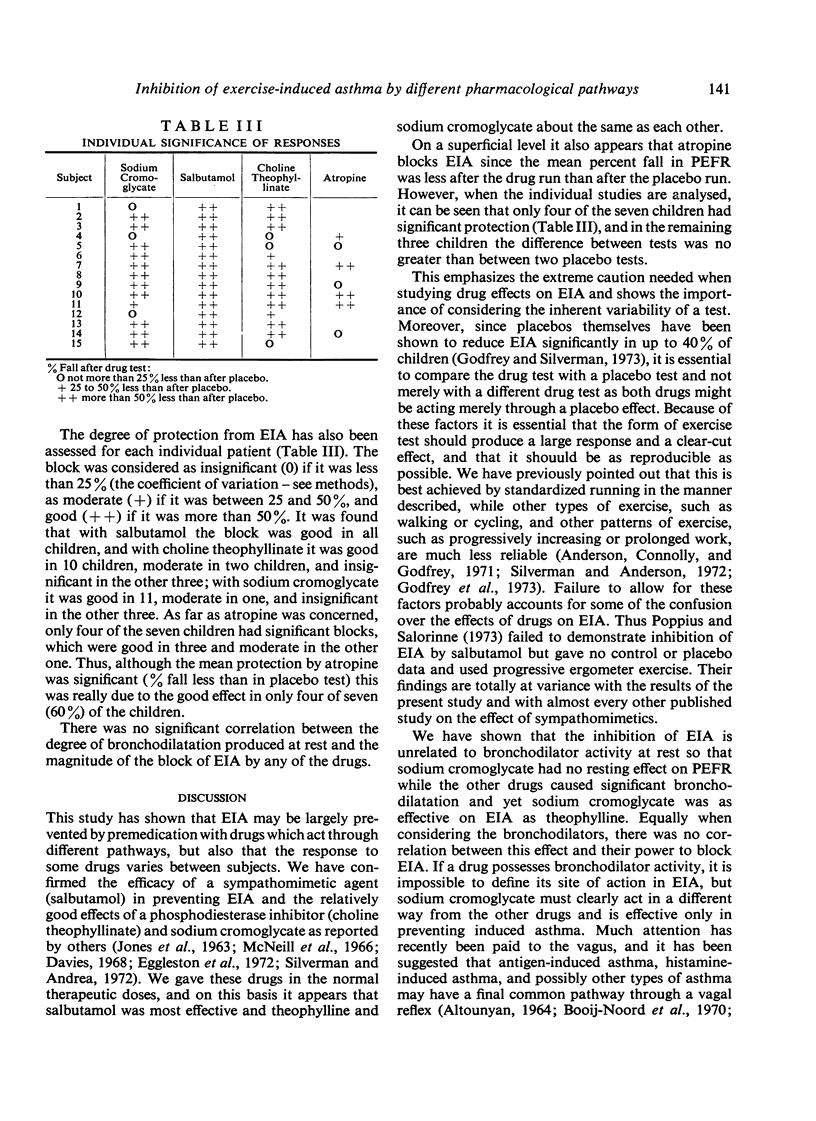
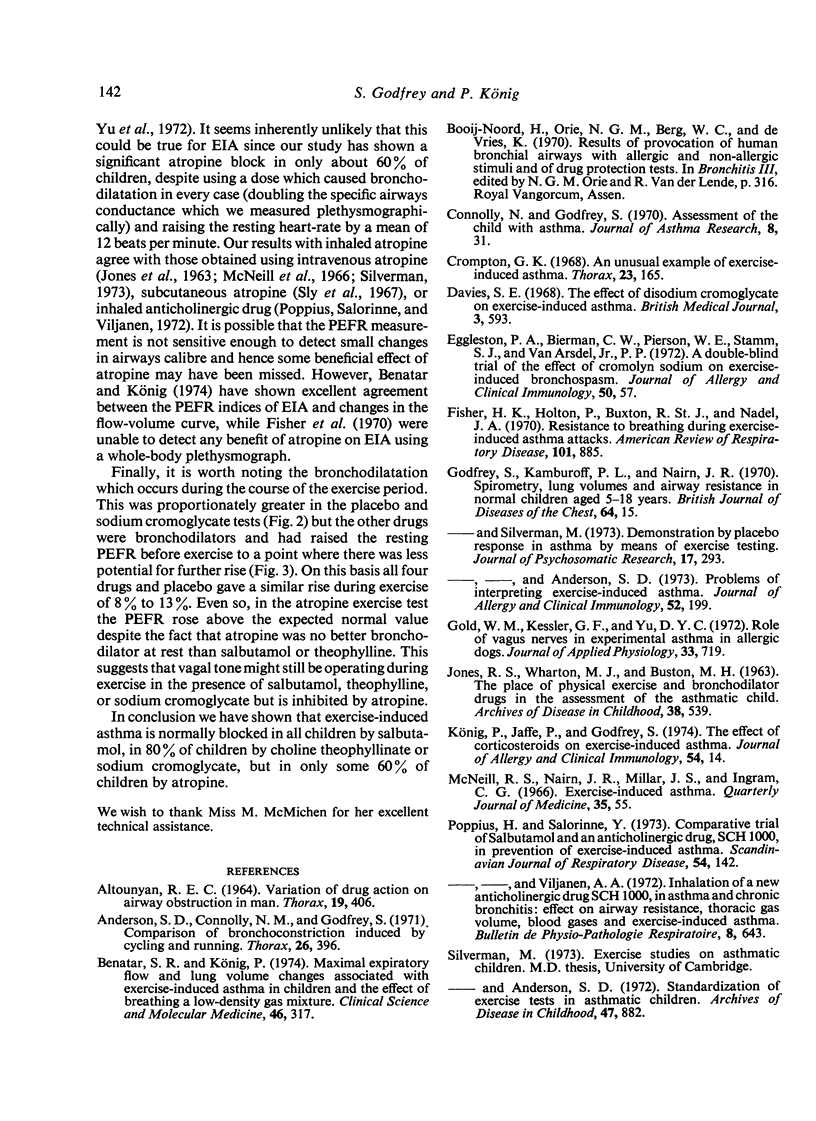
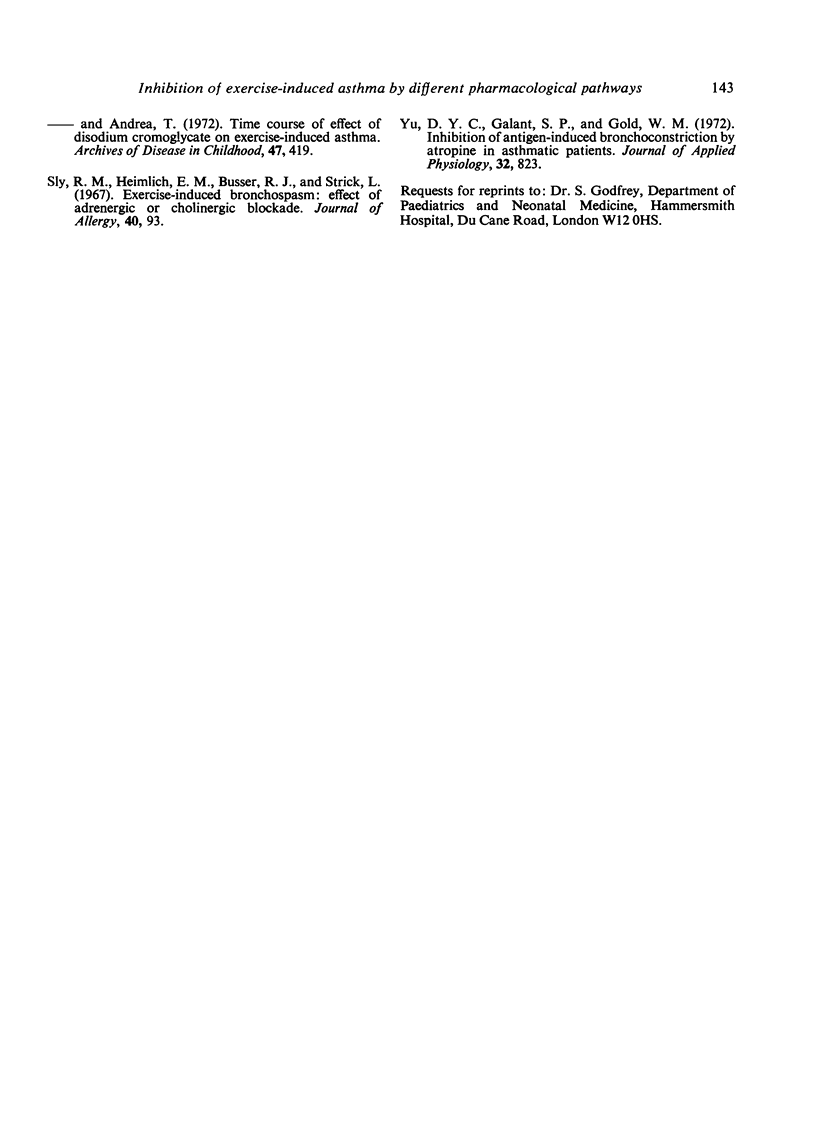
Selected References
These references are in PubMed. This may not be the complete list of references from this article.
- ALTOUNYAN R. E. VARIATION OF DRUG ACTION ON AIRWAY OBSTRUCTION IN MAN. Thorax. 1964 Sep;19:406–415. doi: 10.1136/thx.19.5.406. [DOI] [PMC free article] [PubMed] [Google Scholar]
- Anderson S. D., Connolly N. M., Godfrey S. Comparison of bronchoconstriction induced by cycling and running. Thorax. 1971 Jul;26(4):396–401. doi: 10.1136/thx.26.4.396. [DOI] [PMC free article] [PubMed] [Google Scholar]
- Benatar S. R., Hönig P. Maximal expiratory flow and lung volume changes associated with exercise-induced asthma in children and the effect of breathing a low-density gas mixture. Clin Sci Mol Med. 1974 Mar;46(3):317–329. doi: 10.1042/cs0460317. [DOI] [PubMed] [Google Scholar]
- Connolly N., Godfrey S. Assessment of the child with asthma. J Asthma Res. 1970 Sep;8(1):31–36. doi: 10.3109/02770907009105028. [DOI] [PubMed] [Google Scholar]
- Crompton G. K. An unusual example of exercise-induced asthma. Thorax. 1968 Mar;23(2):165–167. doi: 10.1136/thx.23.2.165. [DOI] [PMC free article] [PubMed] [Google Scholar]
- Davies S. E. Effect of disodium cromoglycate on exercise-induced asthma. Br Med J. 1968 Sep 7;3(5618):593–594. doi: 10.1136/bmj.3.5618.593. [DOI] [PMC free article] [PubMed] [Google Scholar]
- Fisher H. K., Holton P., Buxton R. S., Nadel J. A. Resistance to breathing during exercise-induced asthma attacks. Am Rev Respir Dis. 1970 Jun;101(6):885–896. doi: 10.1164/arrd.1970.101.6.885. [DOI] [PubMed] [Google Scholar]
- Godfrey S., Kamburoff P. L., Nairn J. R. Spirometry, lung volumes and airway resistance in normal children aged 5 to 18 years. Br J Dis Chest. 1970 Jan;64(1):15–24. doi: 10.1016/s0007-0971(70)80045-6. [DOI] [PubMed] [Google Scholar]
- Godfrey S., Silverman M., Anderson S. D. Problems of interpreting exercise-induced asthma. J Allergy Clin Immunol. 1973 Oct;52(4):199–209. doi: 10.1016/0091-6749(73)90058-4. [DOI] [PubMed] [Google Scholar]
- Godfrey S., Silverman M. Demonstration by placebo response in asthma by means of exercise testing. J Psychosom Res. 1973 Nov;17(4):293–297. doi: 10.1016/0022-3999(73)90106-2. [DOI] [PubMed] [Google Scholar]
- Gold W. M., Kessler G. F., Yu D. Y. Role of vagus nerves in experimental asthma in allergic dogs. J Appl Physiol. 1972 Dec;33(6):719–725. doi: 10.1152/jappl.1972.33.6.719. [DOI] [PubMed] [Google Scholar]
- JONES R. S., WHARTON M. J., BUSTON M. H. THE PLACE OF PHYSICAL EXERCISE AND BRONCHODILATOR DRUGS IN THE ASSESSMENT OF THE ASTHMATIC CHILD. Arch Dis Child. 1963 Dec;38:539–545. doi: 10.1136/adc.38.202.539. [DOI] [PMC free article] [PubMed] [Google Scholar]
- König P., Jaffe P., Godfrey S. Effect of corticosteroids on exercise-induced asthma. J Allergy Clin Immunol. 1974 Jul;54(1):14–19. doi: 10.1016/s0091-6749(74)80003-5. [DOI] [PubMed] [Google Scholar]
- McNeill R. S., Nairn J. R., Millar J. S., Ingram C. G. Exercise-induced asthma. Q J Med. 1966 Jan;35(137):55–67. [PubMed] [Google Scholar]
- Poppius H., Salorinne Y. Comparative trial of salbutamol and an anticholinergic drug, SCH 1000, in prevention of exercise-induced asthma. Scand J Respir Dis. 1973;54(3):142–147. [PubMed] [Google Scholar]
- Poppius H., Salorinne Y., Viljanen A. A. Inhalation of a new anticholinergic drug, SCH 1000, in asthma and chronic bronchitis: effect on airway resistance, thoracic gas volume, blood gases and exercise-induced asthma. Bull Physiopathol Respir (Nancy) 1972 May-Jun;8(3):643–653. [PubMed] [Google Scholar]
- Silverman M., Anderson S. D. Standardization of exercise tests in asthmatic children. Arch Dis Child. 1972 Dec;47(256):882–889. doi: 10.1136/adc.47.256.882. [DOI] [PMC free article] [PubMed] [Google Scholar]
- Silverman M., Andrea T. Time course of effect of disodium cromoglycate on exercise-induced asthma. Arch Dis Child. 1972 Jun;47(253):419–422. doi: 10.1136/adc.47.253.419. [DOI] [PMC free article] [PubMed] [Google Scholar]
- Yu D. Y., Galant S. P., Gold W. M. Inhibition of antigen-induced bronchoconstriction by atropine in asthmatic patients. J Appl Physiol. 1972 Jun;32(6):823–828. doi: 10.1152/jappl.1972.32.6.823. [DOI] [PubMed] [Google Scholar]


